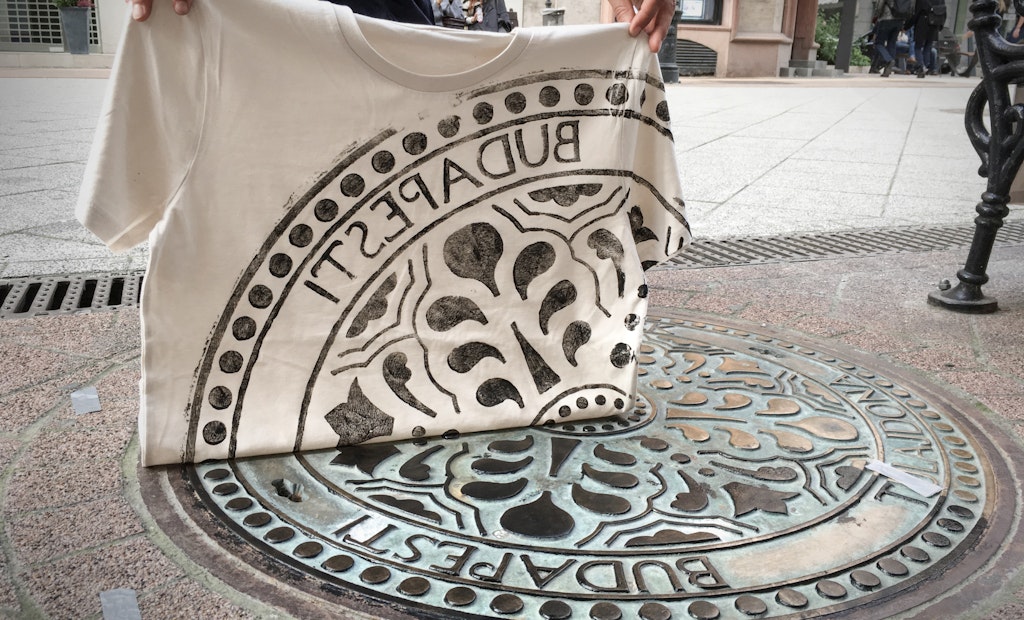Art and sewers are rarely associated, but European company raubdruckerin is turning manhole covers, grates, street tiles and other utility fixtures into works of art.
“The main focus is to explore the surfaces of cities, searching for overlooked, seemingly insignificant details on the pavement. They reveal unobserved parts of cities, that are full of history, diversity and creativity,” says artistic director Emma-France Raff.
Known in English as the “pirate printers,” the Berlin-based company travels to cities around Europe with on-site printing kits, and uses these innocuous street features as “footprints of the city,” covering them with ink to be transferred onto shirts, bags and other cloth apparel.
By making their art project a public exhibition, they often interact with the public and spark meaningful interaction.
“Many people stop to talk and express themselves when they meet raubdruckerin’s printing team in the streets,” says Raff. “It is unusual to see somebody working in the public space like raubdruckerin is doing. We think it is important to use the city as a social space and demonstrate that the public space belongs to everybody.
“This project leaves a lasting impression on people and they talk about it to friends and family. Everybody can access the beauty of it and start seeing their city with new eyes.”
The printmaking process used by raubdruckerin requires few materials and little expertise — just a water-based ink, some painting supplies and a canvas of any kind — to create a lasting reminder of the systems that exist right beneath the public’s nose. Municipal utilities are always looking for new ways to engage the public, and this simple yet innovative concept demonstrates how even low-cost, low-effort projects revolving around the fringe of municipal infrastructure can be powerful tools for public engagement.
“The process of converting a detail of the city into an image, a part of the city is being extracted from its origin and brought to new life in a different context,” says Raff. “By carrying the image around, people become part of the project themselves, stimulating our relationship to our surroundings, as well as being sensitive to the beauty hidden in the unexpected.”






